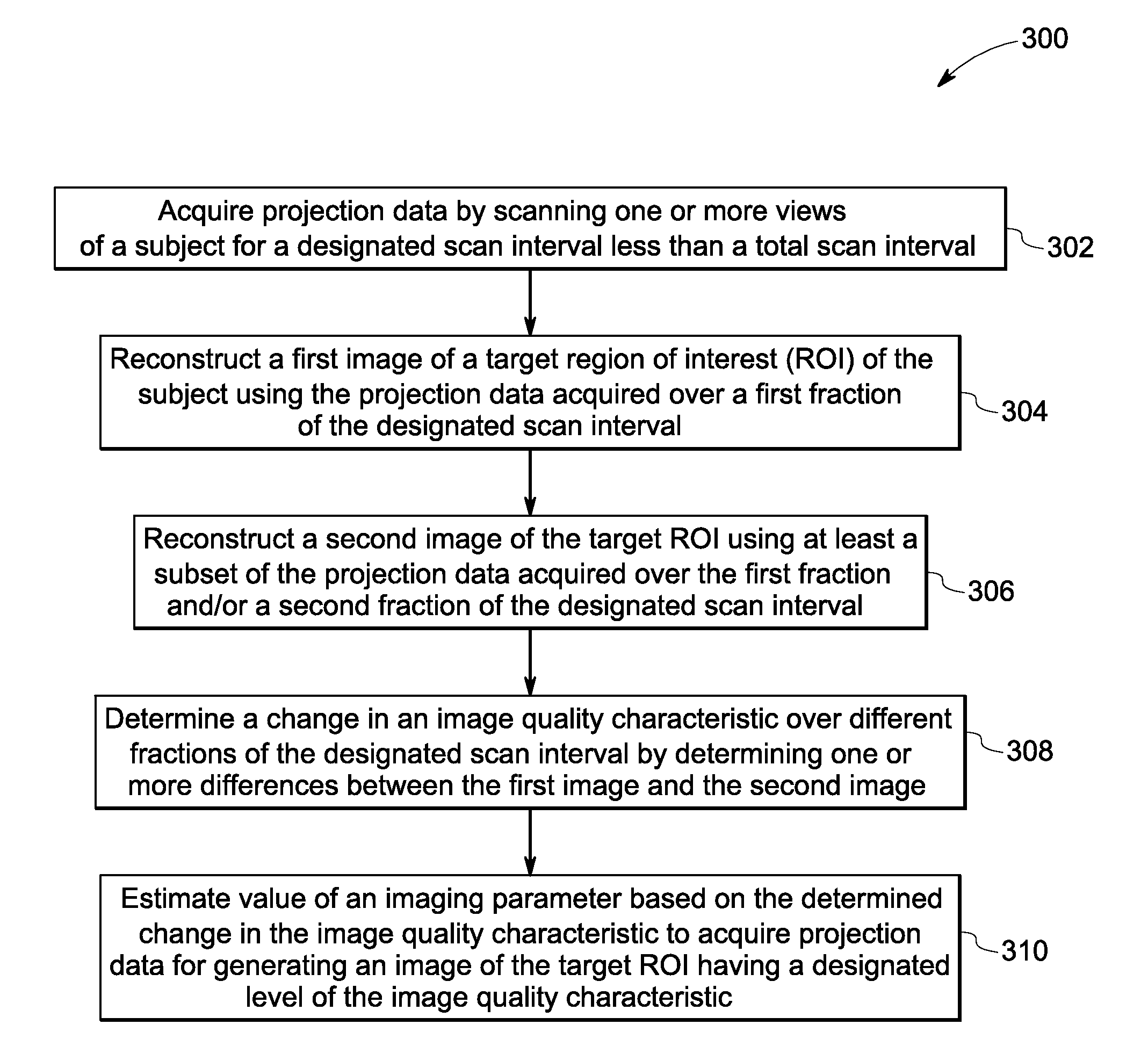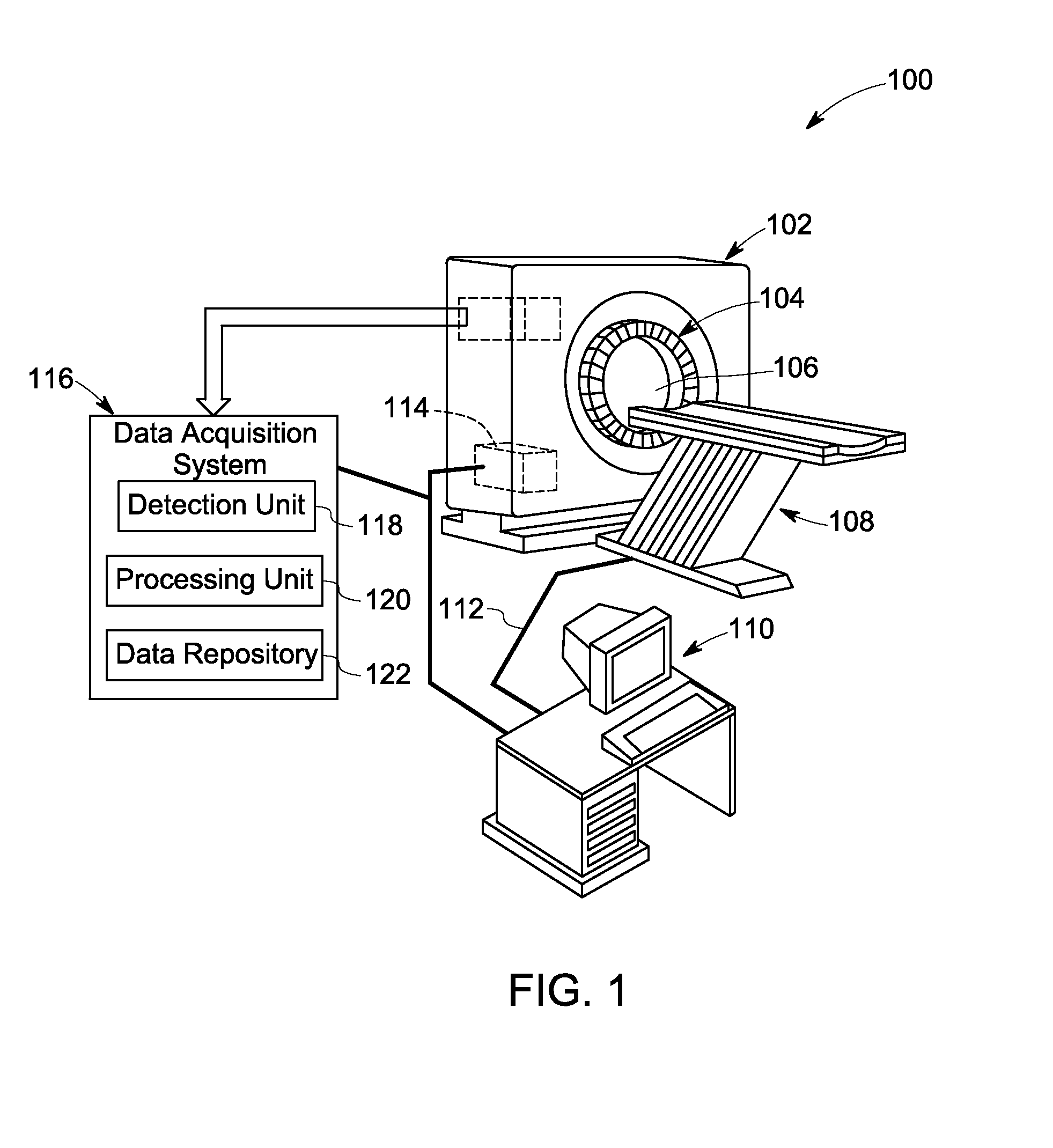Methods and systems for enhanced tomographic imaging
a tomographic imaging and enhanced technology, applied in the field of methods and systems for enhanced tomographic imaging, can solve the problems of limited scan time for acquiring image data, patient immobility, inadequate signal-to-noise ratio (snr) at the region of interest,
- Summary
- Abstract
- Description
- Claims
- Application Information
AI Technical Summary
Benefits of technology
Problems solved by technology
Method used
Image
Examples
Embodiment Construction
[0013]The following description presents exemplary systems and methods for enhanced tomographic imaging. Particularly, embodiments illustrated hereinafter disclose imaging systems and methods that aim to estimate uncertainty in a reconstructed image using a “bootstrap” approach, and use the estimated uncertainty to optimize image data acquisition for reconstructing images of a targeted region of interest (ROI) with a desired spatial resolution.
[0014]In the bootstrap approach, a single data set is used to determine a statistical distribution of an estimated statistic θ, for example, a pixel value in a reconstructed image. To that end, multiple bootstrap replicates are generated from the original data set by randomly drawing samples from the original data set. Each bootstrap replicate is then treated as an independent measurement from which θ can be determined Particularly, a resulting variance in θ determined using the bootstrap replicates generated from a fraction of the original da...
PUM
 Login to View More
Login to View More Abstract
Description
Claims
Application Information
 Login to View More
Login to View More - R&D
- Intellectual Property
- Life Sciences
- Materials
- Tech Scout
- Unparalleled Data Quality
- Higher Quality Content
- 60% Fewer Hallucinations
Browse by: Latest US Patents, China's latest patents, Technical Efficacy Thesaurus, Application Domain, Technology Topic, Popular Technical Reports.
© 2025 PatSnap. All rights reserved.Legal|Privacy policy|Modern Slavery Act Transparency Statement|Sitemap|About US| Contact US: help@patsnap.com



